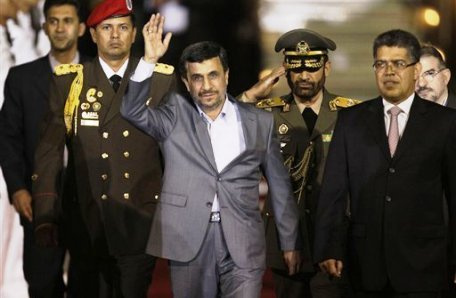No El Dorado for Iranians

By: Gholam-Reza Kiamehr
Russia, China and now Latin America. Iran's list of friends bespeaks of its hostile attitude towards the North American power –anything as long as its non-American. It takes time to find out how Tehran could benefit trade exchange with Latin American countries. It certainly adds an element of diversity to Iran's target markets, but distance, added to significant cultural and historical differences, will slow down the process of trade expansion with these countries. Venezuela, Nicaragua and Bolivia may be potential markets for Iran, but their profitability depends on their economic drive and purchase power. Iran is already running construction projects in Venezuela, though reliable data on the private/public share of the projects are not at hand. If the lion’s share goes to the private sector it means export of engineering expertise, but in case of the government’s handling of the projects, political objectives, which do not necessarily tally with economic interests, come first.
Iran's prominent presence in the Latin America is a display of power in the face of Washington, which has always regarded the region as its political backyard. Iran's connection to Brazil, the emerging economic powerhouse of South America which is following a steady GDP growth reminiscent of China’s, would make sense in terms of revenue. Tehran, however, takes a liking in courting less important countries, the best of which is the oil-rich Venezuela. One may ask the following questions while tracing Iran's course of financial transactions with Latin American countries: will they open their market for made in Iran products? What is the potential of the markets; and what types of products are they going to purchase? How powerful are their private sectors? To what extent do they rely on US Dollar in their trades, and is there a chance to work with alternative currencies? Such problems should be solved before Tehran sets off extensive trade ties with Latin America countries.
The likes of Venezuela, Bolivia and Nicaragua suffer low per capita, and unstable political systems. Add to this National Chamber of Commerce’s –at the helm of the Iranian private sector- unfamiliarity with their markets. One should take a look at the composition of the 100-strong delegation accompanying Ahmadinejad in his tour, to gain a clear picture of the weight of Iran's economic goals. Otherwise, the visit is just another part of Iran's diplomatic campaign aimed to upset the United States.
Switching to the optimistic binoculars, one can say that apart from Brazil –which is already an economic giant with a growth pace similar to China’s—other countries of the Latin American region lack a significant GDP, but in the meantime, there is a chance that they turn into reliable economic partners for Iran in twenty years. Diversity of trade partners is a strong point, provided that there exists a calculated plan. Global economy could be likened to a tsunami: every decade, a giant economy is swept aside just to be replaced by an up-and-comer. No one thought of the communist China to turn into a capitalist hub in a decade. Even a stagnant economy like Cuba may tread a similar trajectory. Keeping the old clients, and finding new ones could empower the Iranian economy.

